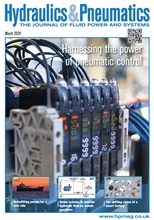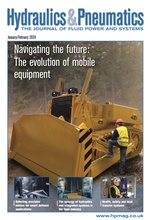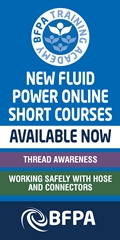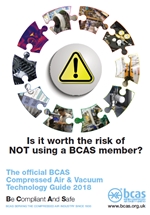- Home » Editorial » Hydraulics
Reasons for the growing interest in Zero Liquid Discharge technology

In 2021 the global market for zero liquid discharge (ZLD) technology was estimated at $1 billion and is forecast to grow at almost 12% over the next ten years1. The rise is being driven in particular by an increase in adoption of the technology by the food and drink and textile industries as a growing world population puts greater pressure on fresh water supplies. Matt Hale, International Sales & Marketing Director, HRS Heat Exchangers reports
Zero liquid discharge (ZLD) is a liquid waste stream treatment which involves transforming liquid waste streams into clean water (which can be reused) and a minimum volume of solid residues. One of the advantages of ZLD over other treatment techniques is its theoretical ability to separate unwanted materials from water, whether they are benign, hazardous or toxic. The resulting solid residue is often more stable, making it suitable for recycling or landfill.
However, poor management or handling of the remaining residue can result in unintended environmental consequences. For example, storage ponds may leak or affect local wildlife while there is the potential for toxic chemicals to leach into groundwater from landfill. It is therefore important that when implementing a ZLD system, full consideration is given to the entire process, including the ultimate fate of liquid and (semi-)solid waste streams. A well-designed ZLD system should minimise or even eliminate liquid waste streams, resulting in clean water for reuse or environmentally-friendly discharge, and a solid residue suitable for further processing (often to recover valuable components for use elsewhere) or for safe disposal.
The factors driving ZLD uptake
According to Transparency Market Research1, ZLD is being implemented across a wide range of industries, including chemical and petrochemical production, food and drink production, textiles, energy and power, and pharmaceutical manufacturing. These industries are being driven to adopt the technology due to growing environmental awareness of the hazards of toxic wastewater and increasing environmental regulation. In turn this has increased the costs of handling and disposing of such waste streams, and in some cases has made such disposal impossible. As a result, companies are looking for more sustainable alternatives, and ZLD is one of the leading technologies in this area.
The specific factors driving uptake are different for each industry. For example, in the energy and power sector (historically the largest user of ZLD technologies), access to clean water suppliers is an increasing concern. Pollution control is also a major driver, and the US EPA considers zero discharge as the preferred treatment option for fly ash and bottom ash transport water, and wastewater from flue gas mercury control systems2.
Elsewhere, growing awareness of the toxic effects of petrochemicals and petrochemical waste products is driving efforts by the industry to clean up its waste processing systems. ZLD methods are already widely used in industrial wastewater treatment to recover useable and profitable minerals and by-products from waste streams, and the success of such systems is encouraging their take up by other businesses. In 2015 the Indian government issued a draft policy requiring all textile plants generating more than 25 cu. m. of wastewater effluent a day to install ZLD facilities2.
-
Smart Manufacturing & Engineering Week
05 - 06 June, 2024
NEC, Birmingham -
HILLHEAD 2024
25 June, 2024, 9:00 - 27 June, 2024, 16:00
Hillhead Quarry, Buxton, Derbyshire UK










